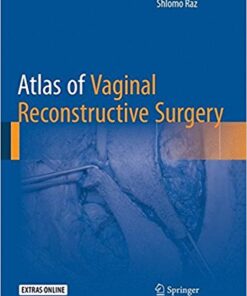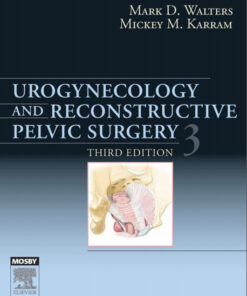What Is Gynecologic Oncology and How It Can Help Women with Cancer
- Briefly introduce the concept of gynecologic oncology and its importance in women’s health.
- Mention the prevalence of gynecologic cancers and their impact on women’s lives.
- Introduce the keyword “gynecologic oncology” and explain why it is relevant to the article.
GYNECOLOGIC SURGERY
2022 UCSF Obstetrics and Gynecology Update – What Does The Evidence Tell Us ? (CME VIDEOS)
GYNECOLOGIC SURGERY
Walters & Karram Urogynecology and Reconstructive Pelvic Surgery 5th Edition PDF
GYNECOLOGIC SURGERY
GYNECOLOGIC SURGERY
Atlas of Difficult Gynecological Surgery 1st ed. 2020 Edition PDF
GYNECOLOGIC SURGERY
GYNECOLOGIC SURGERY
Precise Neurovascular Anatomy for Radical Hysterectomy 1st ed. 2020 Edition PDF
GYNECOLOGIC SURGERY
Speroff’s Clinical Gynecologic Endocrinology and Infertility Ninth Edition PDF
GYNECOLOGIC SURGERY
Translational Advances in Gynecologic Cancers 1st Edition PDF
GYNECOLOGIC SURGERY
Pre-Menopause, Menopause and Beyond: Volume 5: Frontiers in Gynecological Endocrinology PDF
GYNECOLOGIC SURGERY
Focus on Gynecologic Malignancies (Energy Balance and Cancer) 1st ed. 2018 Edition PDF
GYNECOLOGIC SURGERY
Textbook of Gynecologic Robotic Surgery 1st ed. 2018 Edition PDF
GYNECOLOGIC SURGERY
GYNECOLOGIC SURGERY
GYNECOLOGIC SURGERY
GYNECOLOGIC SURGERY
Atlas of Vaginal Reconstructive Surgery 1st ed. 2015 EditionPDF
GYNECOLOGIC SURGERY
Operative Techniques in Gynecologic Surgery: Gynecology 1st Edition PDF
GYNECOLOGIC SURGERY
Congenital Mullerian Anomalies 2016 : Diagnosis and Management
GYNECOLOGIC SURGERY
GYNECOLOGIC SURGERY
DVD Videos Surgical Management of Pelvic Organ Prolapse: Female Pelvic Surgery Video Atlas Series 1e
GYNECOLOGIC SURGERY
GYNECOLOGIC SURGERY
Diagnostic and Operative Hysteroscopy 2nd (second) Revised Edition
GYNECOLOGIC SURGERY
A Practical Guide to Office Gynecologic Procedures 2nd ed. Edition
GYNECOLOGIC SURGERY
-
Define gynecologic oncology and its sub-specialties:
- Explain what gynecologic oncology is and how it differs from general oncology.
- Describe the different sub-specialties within gynecologic oncology, such as ovarian cancer, cervical cancer, and uterine cancer.
- Prevalence and risk factors of gynecologic cancers:
- Highlight the incidence rates of gynecologic cancers in women.
- Discuss the risk factors associated with developing these types of cancers, such as age, family history, and lifestyle choices.
- Diagnosis and treatment options for gynecologic cancers:
- Explain the diagnostic tests used to detect gynecologic cancers, such as imaging and biopsies.
- Describe the different treatment options available for gynecologic cancers, such as surgery, chemotherapy, and radiation therapy.
-
Importance of early detection and prevention:
- Emphasize the importance of early detection and screening for gynecologic cancers.
- Highlight the different screening methods available for gynecologic cancers, such as Pap tests and HPV testing.
- Mention lifestyle choices that can reduce the risk of gynecologic cancers, such as regular exercise and a healthy diet.
- highlighting the importance of gynecologic oncology in women's health.
- Reiterate the relevance of the keyword “gynecologic oncology” and its importance in raising awareness about gynecologic cancers.
- Provide a call-to-action for women to prioritize their gynecologic health and seek medical advice if they notice any symptoms or risk factors.






























